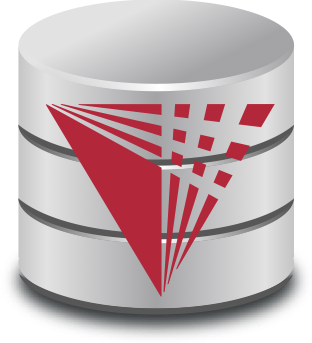Chenjie Li, Ph.D. Student

I recieved my Bachelor Degree in Electrical Engineering from GuiZhou University, China. I got my master’s degree in Data Science at Illinois Institute of Technology. I started my PhD program in Computer Science at IIT DBGroup in Spring 2020.
Teaching
I have been TA for the following courses:- 2019 Fall: CS425 - Database Organization
- 2020 Spring: CS525 - Advanced Database Organization
- 2020 Spring: CS520 - Data Integration, Warehousing, and Provenance
- 2021 Fall: CS525 - Advanced Database Organization
Research Projects
I am involved in the following research projects:Collaborators
I am collaborating with:Publications
-
CaJaDE: Explaining Query Results by Augmenting Provenance with Context
Chenjie Li, Juseung Lee, Zhengjie Miao, Boris Glavic and Sudeepa Roy
Proceedings of the VLDB Endowment (Demonstration Track). 15, 12 (2022) , 3594–3597.details@article{LL22a, author = {Li, Chenjie and Lee, Juseung and Miao, Zhengjie and Glavic, Boris and Roy, Sudeepa}, keywords = {Provenance; Explanations}, title = {CaJaDE: Explaining Query Results by Augmenting Provenance with Context}, journal = {Proceedings of the VLDB Endowment (Demonstration Track)}, projects = {Explanations beyond Provenance}, pdfurl = {http://cs.iit.edu/%7edbgroup/assets/pdfpubls/LL22.pdf}, volume = {15}, number = {12}, pages = {3594--3597}, doi = {10.14778/3554821.3554852}, year = {2022}, venueshort = {{PVLDB}} }
-
Putting Things into Context: Rich Explanations for Query Answers using Join Graphs
Chenjie Li, Zhengjie Miao, Qitian Zeng, Boris Glavic and Sudeepa Roy
Proceedings of the 46th International Conference on Management of Data (2021), pp. 1051–1063.details@inproceedings{LM21, author = {Li, Chenjie and Miao, Zhengjie and Zeng, Qitian and Glavic, Boris and Roy, Sudeepa}, booktitle = {Proceedings of the 46th International Conference on Management of Data}, pages = {1051–1063}, projects = {Explanations beyond Provenance}, title = {Putting Things into Context: Rich Explanations for Query Answers using Join Graphs}, pdfurl = {https://dl.acm.org/doi/pdf/10.1145/3448016.3459246}, doi = {10.1145/3448016.3459246}, keywords = {Provenance; Explanations}, venueshort = {SIGMOD}, reproducibility = {https://github.com/IITDBGroup/CaJaDe}, video = {https://www.youtube.com/watch?v=puhCAnFuPR4&list=PL3xUNnH4TdbsfndCMn02BqAAgGB0z7cwq}, longversionurl = {https://arxiv.org/pdf/2103.15797}, year = {2021} }In many data analysis applications there is a need to explain why a surprising or interesting result was produced by a query. Previous approaches to explaining results have directly or indirectly relied on data provenance, i.e., input tuples contributing to the result(s) of interest. However, some information that is relevant for explaining an answer may not be contained in the provenance. We propose a new approach for explaining query results by augmenting provenance with information from other related tables in the database. Using a suite of optimization techniques, we demonstrate experimentally using real datasets and through a user study that our approach produces meaningful results and is efficient.
-
CAPE: Explaining Outliers by Counterbalancing
Zhengjie Miao, Qitian Zeng, Chenjie Li, Boris Glavic, Oliver Kennedy and Sudeepa Roy
Proceedings of the VLDB Endowment (Demonstration Track). 12, 12 (2019) , 1806–1809.details@article{MZ19a, author = {Miao, Zhengjie and Zeng, Qitian and Li, Chenjie and Glavic, Boris and Kennedy, Oliver and Roy, Sudeepa}, date-modified = {2019-08-02 09:14:13 -0500}, journal = {Proceedings of the VLDB Endowment (Demonstration Track)}, keywords = {Outliers; Intervention; Cape; Explanations}, pdfurl = {http://www.vldb.org/pvldb/vol12/p1806-miao.pdf}, projects = {Explanations beyond Provenance}, pages = {1806-1809}, volume = {12}, issue = {12}, doi = {10.14778/3352063.3352071}, title = {CAPE: Explaining Outliers by Counterbalancing}, venueshort = {{PVLDB}}, year = {2019} }In this demonstration we showcase Cape, a system that ex- plains surprising aggregation outcomes. In contrast to previous work which relies exclusively on provenance, Cape applies a novel approach for explaining outliers in aggregation queries through counterbalancing (outliers in the opposite direction). The foundation of our approach are aggregate regression patterns (ARPs) based on which we defined outliers, and an efficient explanation generation algorithm that utilizes these patterns. In the demonstration, the audience can run aggregation queries over real world datasets, and browse the patterns and explanations returned by Cape for outliers in the result of such queries.

